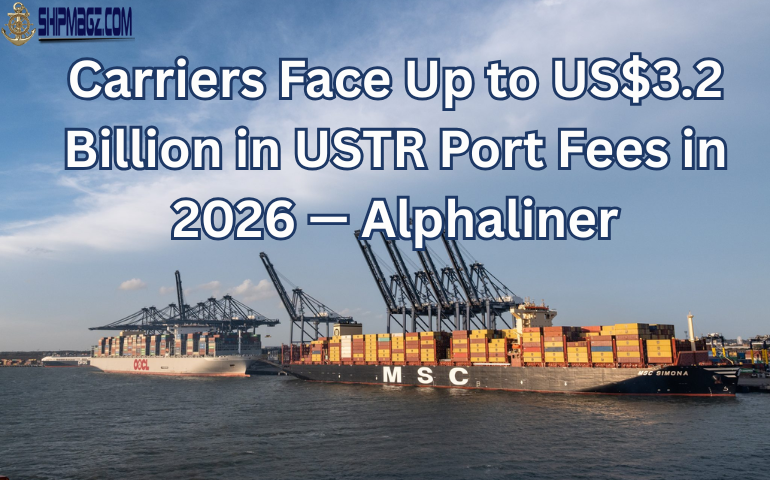Carriers Face Up to US$3.2 Billion in USTR Port Fees in 2026 — Alphaliner
Publish Date:

Alphaliner warns that in 2026 container carriers may incur as much as US$3.2 billion in port fees under USTR (United States Trade Representative) measures, increasing cost pressures across global shipping.
1. Context & Forecast
- According to Alphaliner’s analysis, container shipping lines could be hit with USTR-imposed port fee liabilities reaching US$3.2 billion in 2026.
- This expected fee burden stems from trade policy changes, stricter enforcement, and shifting regulations targeting port services used by foreign carriers.
2. Impacts on Shipping Lines
- The fee surge could erode margins significantly, especially for carriers already facing tight profitability.
- Many shipping lines may need to pass on increased costs to shippers (importers/exporters) via higher freight rates.
- Carriers will be pressured to optimize operations, reduce inefficiencies, and seek cost-offsetting strategies to stay competitive.
3. Risks & Challenges
- Smaller and mid-sized carriers may be disproportionately affected, lacking the scale or flexibility to absorb the extra costs.
- The change may drive further consolidation in the industry as weaker players struggle with financial strain.
- Global trade flows might be disrupted as shippers reassess routing, ports of call, or carrier contracts to minimize exposure.
4. Strategic Responses
- Carriers should begin scenario modeling now: compute projected cost increases, and incorporate them into rate negotiations.
- Investment in operational efficiency (e.g. port turnaround, fuel optimization, digitalization) will become critical.
- Transparency with customers about cost drivers may help mitigate backlash when passing on new charges.










